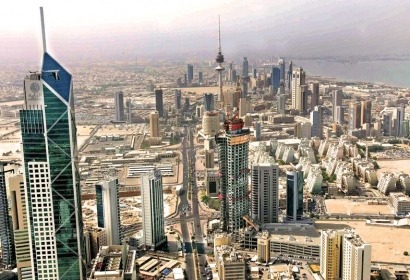
The Kuwait Sustainable Energy Conference and Exhibition will be held 29 November to 2 December 2015 at the Jumeirah Messilah Beach Resort & Spa, Safat, Kuwait.
In advance of the event, a new report from the conference organizers said that the decline in the cost of renewable energy technologies couldn't have occurred at a more auspicious time, as domestic energy demand in Kuwait continues to grow at a rate of between 6 percent and 8 percent a year -- and is expected to triple by 2030.
At present, according to the Kuwait's Ministry of Electricity and Water, the nation is completely dependent on the burning of fossil fuels for power and water desalination. The ministry's goal is for at least 10 percent of Kuwait's energy to come from renewables by 2020, and for at least 15 percent of the country's energy to be from renewable sources by 2030.
"The use of alternative energy in Kuwait is important for three reasons," said Dr. Bader Al Taweel, Chairman of Renewable Energy at Kuwait Engineers Society. "The growing demand for electricity, the high price of oil, and the optimal environment for investing in alternative energy, as Kuwait is abundant with bright sun and wind.”
Hydrocarbons remain at the heart of Kuwait’s economy, as they account for more than 90 percent of the state’s GDP and 80 percent of government revenues.
Oil demands for both export and domestic power uses continue to rise as well, meaning that its uninterrupted production will continue to be a critical consideration for the government in years to come, the report states.
Kuwait, of course, is no stranger to renewable energy. It implemented its first renewable energy programme in 1975, installing a number of solar facilities, but the effort was abandoned in the late 1980s due to the high costs associated with materials and operations.
But changing economics of renewables has inspired both public and private sectors in Kuwait to take another look at their feasibility.
The report, "State of the Market: Renewable Energy Projects in Kuwait," offers several examples of the renewed vigor of the sector. Renewable energy projects recently completed or under construction, include:
The Kuwait Sustainable Energy Conference and Exhibition is intended to both to bolster these efforts and encourage a reduction in the nation's per capita energy usage. It will bring together key regional and international industry players to help formulate strategies, discuss the latest case studies and benchmark global best practices.
In addition, the exhibition will facilitate networking and demonstrate the very latest technologies for renewable energy, building management systems and insulation plus power quality improvement.
For additional information:

